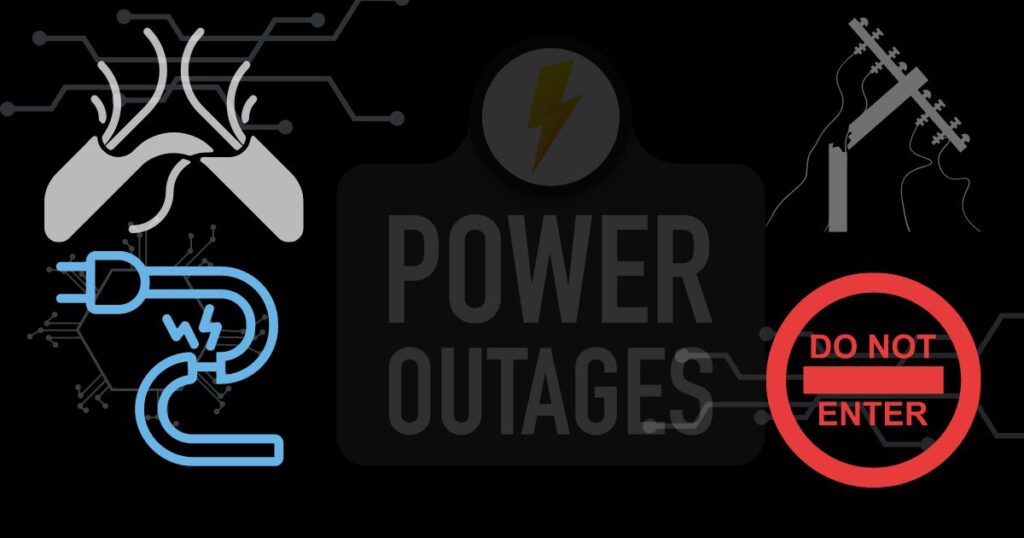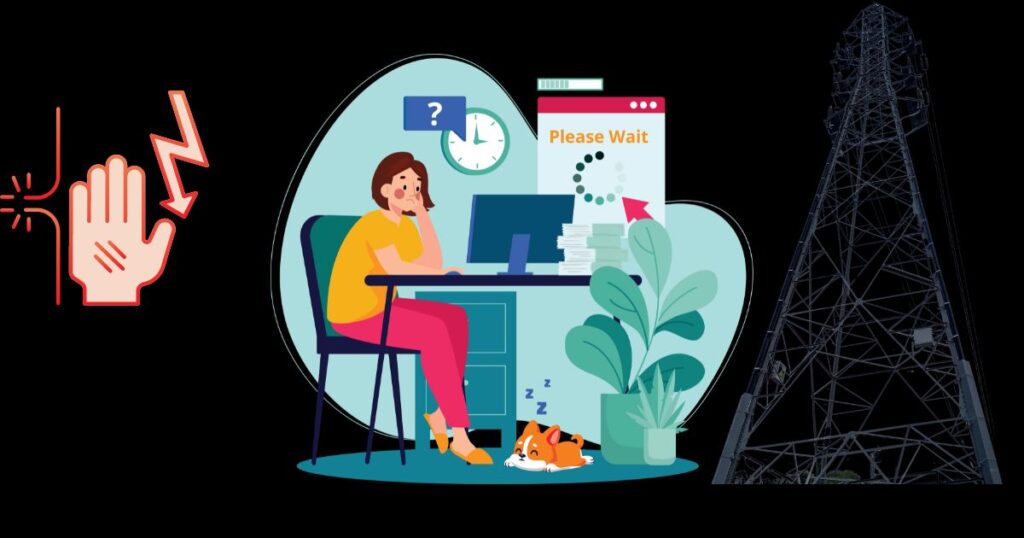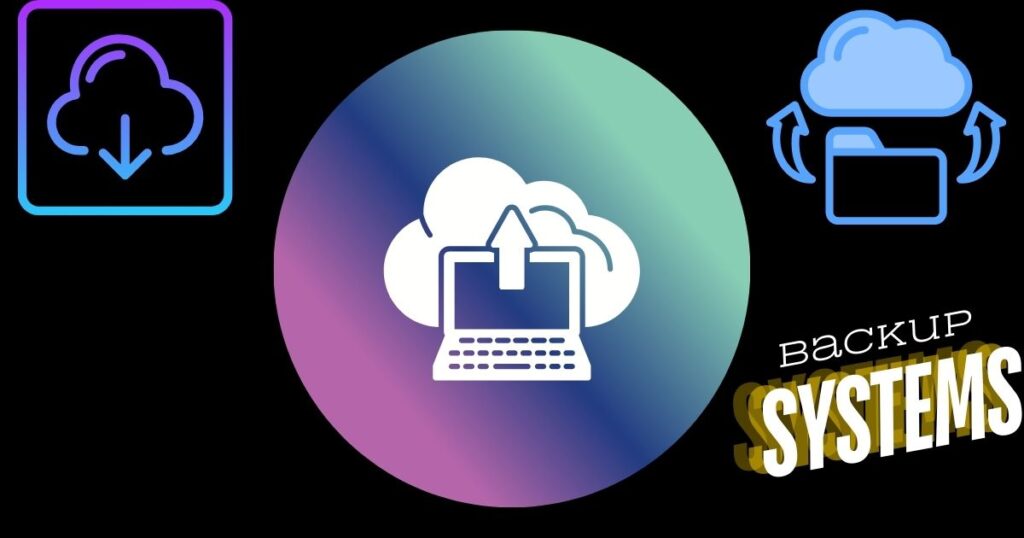The recent tech outages involving CrowdStrike highlighted a significant vulnerability in our increasingly digital world. Businesses, both large and small, rely heavily on technology for daily operations, making tech outages a critical concern. This blog provides an in-depth guide on how businesses can prepare for and react to such disruptions, ensuring minimal impact and swift recovery.

Understanding the Impact of Tech Outages
Tech outages can cripple businesses. From communication breakdowns to halted transactions, the fallout can be extensive. The CrowdStrike incident serves as a stark reminder of this. To safeguard against such disruptions, businesses need a proactive approach, focusing on preparation and response.
Preparing for Tech Outages

1. Develop a Comprehensive Disaster Recovery Plan (DRP)
A DRP is essential for minimizing downtime and data loss during an outage. Here’s how to create an effective plan:
- Identify Critical Services: Determine which services and systems are vital to your operations. Focus on those that directly impact your revenue, customer service, and compliance requirements.
- Establish Recovery Time Objectives (RTOs): Define acceptable downtime for each critical service. This helps prioritize which systems need to be restored first.
- Outline Recovery Strategies: Develop step-by-step procedures for restoring services. This includes technical steps and communication protocols.
- Assign Roles and Responsibilities: Ensure team members know their specific duties during an outage. Clearly defined roles prevent confusion and ensure a coordinated response.
- Regularly Test the Plan: Conduct simulations to ensure the plan’s effectiveness and make necessary adjustments. Testing reveals weaknesses that can be addressed before a real incident occurs.
2. Implement Redundant Systems

Redundancy involves having backup systems in place to take over when primary systems fail. This can include:
- Data Redundancy: Use multiple servers, cloud storage, and regular backups to protect data. Ensure backups are stored in different physical locations.
- Network Redundancy: Set up secondary internet connections and VPNs to maintain connectivity. Diverse providers reduce the risk of a single point of failure.
- Power Redundancy: Invest in uninterruptible power supplies (UPS) and backup generators. Power continuity is crucial for keeping systems operational during an outage.
Cyberattacks are a common cause of tech outages. Strengthen your defenses by:
- Regularly Updating Software: Keep all systems and applications up to date with the latest security patches. Outdated software is a common entry point for attackers.
- Conducting Security Audits: Regularly review and improve your security measures. Professional audits can identify vulnerabilities you might overlook.
- Training Employees: Educate staff on recognizing and preventing cyber threats. Phishing simulations and regular training sessions increase awareness.
4. Establish Clear Communication Channels
Effective communication is crucial during an outage. Ensure you have:
- Internal Communication Plans: Use tools like Slack, Microsoft Teams, or alternative channels to keep employees informed. Regular updates prevent misinformation and panic.
- External Communication Strategies: Maintain transparency with customers and stakeholders through social media, email, and your website. Honest communication helps maintain trust.
Reacting to Tech Outages

When a tech outage occurs, a swift and organized response is critical. Here’s a step-by-step guide:
1. Assess the Situation
Quickly determine the extent and cause of the outage. Identify affected systems and services to prioritize recovery efforts. Initial assessment helps allocate resources effectively.
2. Implement the Disaster Recovery Plan
Activate your DRP immediately. Ensure all team members know their roles and follow the outlined procedures. A well-rehearsed plan accelerates recovery.
3. Communicate with Stakeholders
Keep everyone informed about the situation, steps being taken, and expected timelines for resolution. Transparency builds trust and reduces panic. Use multiple channels to ensure the message reaches all stakeholders.
4. Monitor Progress
Regularly check on the status of recovery efforts. Adjust your approach as needed to address unforeseen challenges. Continuous monitoring helps identify and resolve issues quickly.
5. Document the Incident

Record detailed information about the outage, including:
- Time of occurrence: When did the outage start and end? Accurate timing helps analyze the event.
- Affected systems: Which systems were impacted? Understanding the scope aids in improving future responses.
- Actions taken: What steps were implemented to resolve the issue? Documentation helps refine the DRP.
- Outcome: What was the result of the recovery efforts? Evaluate what worked and what didn’t for future improvements.
Learning from the CrowdStrike Tech Incident
The CrowdStrike failure offers several lessons for businesses:
1. Importance of Vendor Reliability
Choose vendors with strong track records and robust backup systems. Regularly review and update vendor contracts to include service level agreements (SLAs) that outline acceptable performance standards and response times.
2. Value of a Multi-Layered Security Approach
A single layer of security is insufficient. Implement multiple layers, such as firewalls, antivirus software, and intrusion detection systems (IDS), to protect against various threats. A multi-layered approach significantly reduces the risk of breaches.
3. Necessity of Regular Updates and Testing
Ensure all systems and applications are regularly updated and tested to identify vulnerabilities and confirm that recovery plans are effective. Regular updates close security gaps, and testing ensures your DRP is robust.
Conclusion
Tech outages are inevitable, but businesses can mitigate their impact through proactive preparation and swift response. By developing a comprehensive disaster recovery plan, implementing redundant systems, investing in cybersecurity, and maintaining clear communication channels, businesses can navigate these disruptions more effectively.
The CrowdStrike incident serves as a wake-up call. It underscores the need for businesses to prioritize their tech infrastructure and be ready for any eventuality. By following the guidelines outlined in this blog, your business can better withstand tech outages and continue to thrive in our increasingly digital world.
Remember, the key to managing tech outages lies in preparation and clear communication. Equip your business with the tools and strategies needed to face any technological challenge head-on. For more topics that equally riveting visit our blog section on marginseyedigital.com